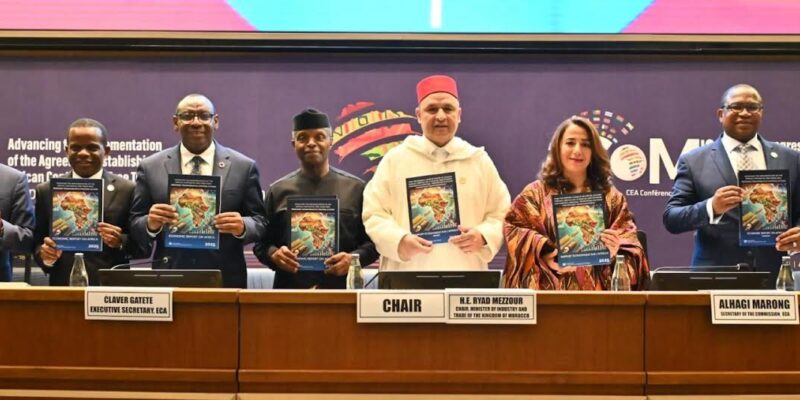Africa stands at a critical juncture in its development, with significant potential driven by a youthful population, abundant natural resources, and expanding consumer markets, according to the Economic Commission for Africa (ECA) Economic Report on Africa 2025.
While post-pandemic economic growth had rebounded, it remained below pre-pandemic levels, slowing progress toward the Sustainable Development Goals (SDGs).
The report highlighted the African Continental Free Trade Area (AfCFTA) as a transformative opportunity to accelerate trade-led integration and drive inclusive, sustainable development.
“With AfCFTA, intra-African trade could increase by 45 percent. While the benefits will span multiple sectors, agribusiness and industry stand to gain the most,” said Hanan Morsy, ECA’s Deputy Executive Secretary and Chief Economist, presenting the report’s key findings at COM2025.
“This is an opportunity to focus on high-value-added sectors and strengthen regional value chains,” she added.
Morsy noted that AfCFTA could boost trade flows in areas where Africa already holds a competitive advantage, such as fertilizer production.
“Between 2019 and 2023, Africa exported nearly US$10 billion worth of fertilizers annually while importing US$3.7 billion from outside the continent. This underscores the potential to deepen intra-African trade,” she said.
The report found that manufacturing dominates intra-African trade, accounting for 46 percent of exports, followed by food (21 percent), fuels (20 percent), and ore and metals (7 percent).
By 2045, a projected 45 percent increase in intra-African exports could add US$275.7 billion to the continent’s cross-border trade.
AfCFTA implementation could also accelerate Africa’s energy transition, with an estimated US$22.4 billion in investments needed for electricity generation, transmission, and distribution infrastructure between 2025 and 2040—80 percent of which was expected to go into renewables.
However, the report stressed that realizing AfCFTA’s full benefits required strategic investments, well-designed policies, and coordinated reforms at all levels of government.
WARNING! All rights reserved. This material, and other digital content on this website, may not be reproduced, published, broadcast, rewritten or redistributed in whole or in part without prior express permission from ZAMBIA MONITOR.












Comments